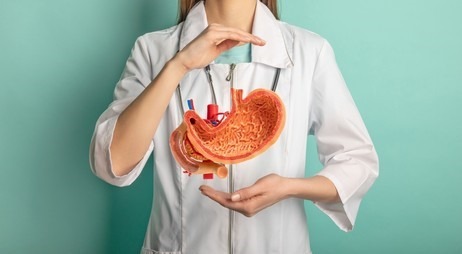The gastrointestinal (GI) system plays a crucial role in our overall health and well-being. Comprising the stomach, intestines, liver, pancreas, and other organs, the GI tract is responsible for digesting food, absorbing nutrients, and eliminating waste from the body. Maintaining optimal gastrointestinal health is essential for proper digestion, nutrient absorption, and immune function. In this article, we will explore the importance of gastrointestinal health, common disorders affecting the GI system, and strategies for maintaining a healthy gut.
The Importance of Gastrointestinal Health
The gastrointestinal system is often referred to as the body’s “second brain” due to its extensive network of nerve cells and neurotransmitters. This gut-brain connection plays a significant role in regulating mood, appetite, and immune function. A healthy GI tract is essential for:
- Digestion and Nutrient Absorption: The GI system breaks down food into smaller molecules that can be absorbed by the body. Proper digestion and absorption are essential for obtaining nutrients and energy from the foods we eat.
- Immune Function: The gut is home to trillions of bacteria, viruses, and other microorganisms collectively known as the gut microbiota. These microbes play a crucial role in supporting immune function and protecting against infections.
- Waste Elimination: The GI tract helps eliminate waste products and toxins from the body through regular bowel movements. Efficient waste elimination is essential for maintaining overall health and preventing constipation and other digestive issues.
Common Disorders Affecting Gastrointestinal Health
Despite its importance, the gastrointestinal system is susceptible to various disorders and conditions that can affect digestive function and overall well-being. Some common gastrointestinal disorders include:
- Gastroesophageal Reflux Disease (GERD): GERD is a chronic condition characterized by acid reflux and heartburn. It hurts and irritates the esophagus when stomach acid refluxes back into it.
- Irritable Bowel Syndrome (IBS): The symptoms of IBS, a functional gastrointestinal illness, include bloating, altered bowel patterns, and abdominal pain. Stress, hormone fluctuations, and specific foods are common triggers.
- Inflammatory Bowel Disease (IBD): IBD encompasses two main conditions: Crohn’s disease and ulcerative colitis. These are chronic inflammatory conditions that affect the lining of the digestive tract, leading to symptoms such as abdominal pain, diarrhea, and rectal bleeding.
- Celiac Disease: Gluten is an autoimmune protein that can be found in wheat, barley, and rye that causes celiac disease. It damages the lining of the small intestine and can lead to malabsorption of nutrients.
- Gallstones: Gallstones are hardened deposits that form in the gallbladder, a small organ that stores bile produced by the liver. They can cause abdominal pain, nausea, and vomiting if they obstruct the bile ducts.
Strategies for Maintaining Gastrointestinal Health:
- Eat a Balanced Diet: A diet rich in fiber, fruits, vegetables, and whole grains supports digestive health by promoting regular bowel movements and providing essential nutrients. Limiting processed foods, sugary snacks, and fatty foods can help prevent digestive discomfort and maintain a healthy weight.
- Stay Hydrated: To keep your digestion in check and avoid constipation, make sure you’re drinking enough water. Aim to drink at least 8-10 glasses of water per day, and limit caffeine and alcohol consumption, as they can dehydrate the body.
- Manage Stress: Chronic stress can disrupt digestive function and exacerbate gastrointestinal symptoms. Practice stress-reducing techniques such as deep breathing, meditation, yoga, or tai chi to promote relaxation and improve overall well-being.
- Exercise Regularly: Regular physical activity supports gastrointestinal health by promoting regular bowel movements, reducing inflammation, and improving immune function. Aim for at least 30 minutes of moderate-intensity exercise most days of the week.
- Get Plenty of Sleep: Adequate sleep is essential for overall health and well-being, including gastrointestinal health. Aim for 7-9 hours of quality sleep per night to support digestion, hormone regulation, and immune function.
- Avoid Trigger Foods: Certain foods and beverages can exacerbate gastrointestinal symptoms in susceptible individuals. Pay attention to your body’s reactions and avoid trigger foods such as spicy foods, caffeine, alcohol, and high-fat foods if they cause digestive discomfort.
- Practice Good Hygiene: Practicing good hygiene habits, such as washing your hands before eating and after using the bathroom, can help prevent the spread of harmful bacteria and reduce the risk of gastrointestinal infections.
Conclusion
Maintaining optimal gastrointestinal health is essential for overall health and well-being. By understanding the importance of gastrointestinal health, recognizing common disorders affecting the GI system, and implementing strategies for maintaining a healthy gut, you can support digestive function, promote nutrient absorption, and enhance overall quality of life. Remember to consult with a healthcare professional if you experience persistent gastrointestinal symptoms or have concerns about your digestive health. With proactive lifestyle modifications and proper medical care, you can achieve and maintain optimal gastrointestinal health for years to come.






